-
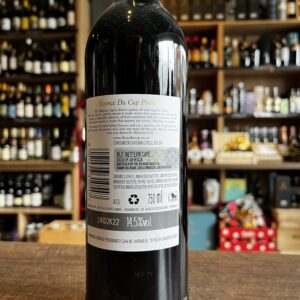
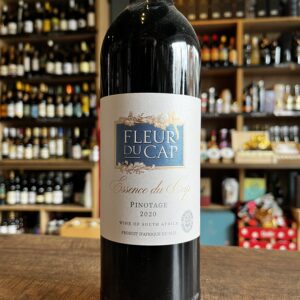 The Fleur du Cap approach is unconstrained. Using only meticulously selected grapes from the finest vineyards across the Cape Winelands, the winery produces a range of wines that offer diversity of choice and diversity of taste. Essence du Cap is known for exceptional quality and wines that express their true varietal character. The grapes were selected from four different vineyard blocks situated around the Bottelary Hills, which were planted in 1987, 1994, 1996 and 1997. Two of the vineyards are bush vines and the remaining trellised. The soils consist of deep decomposed shale (bush vines) and granite (trellised vines), with good water retention. Yields for the bush vines were 6 to 8 t/ha and the trellised vineyards 10 to 12 t/ha. Supplementary irrigation was given during the latter stages of the season to ensure full ripening. Pest and disease control is implemented according to South African subjective IPW standards. This wine is an ideal accompaniment to grilled lamb and poultry, pork roasts and game fish. It is perfect with classic Cape cuisine like Bobotie and Malay Curries, as well as spicy Mexican food.
The Fleur du Cap approach is unconstrained. Using only meticulously selected grapes from the finest vineyards across the Cape Winelands, the winery produces a range of wines that offer diversity of choice and diversity of taste. Essence du Cap is known for exceptional quality and wines that express their true varietal character. The grapes were selected from four different vineyard blocks situated around the Bottelary Hills, which were planted in 1987, 1994, 1996 and 1997. Two of the vineyards are bush vines and the remaining trellised. The soils consist of deep decomposed shale (bush vines) and granite (trellised vines), with good water retention. Yields for the bush vines were 6 to 8 t/ha and the trellised vineyards 10 to 12 t/ha. Supplementary irrigation was given during the latter stages of the season to ensure full ripening. Pest and disease control is implemented according to South African subjective IPW standards. This wine is an ideal accompaniment to grilled lamb and poultry, pork roasts and game fish. It is perfect with classic Cape cuisine like Bobotie and Malay Curries, as well as spicy Mexican food. -
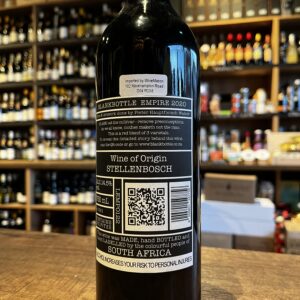
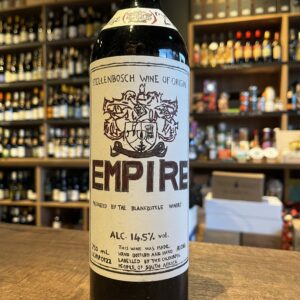 The red brother of Empire Strikes Back is EMPIRE - not striking back but just being himself. With Cabernet Sauvignon as driver and bits of Merlot and Cabernet Franc to compliment. The old style design label shows a combination crest. I combined the crest of Stellenbosch University and Elsenburg College - The 2 Empires when it comes to wine education - I studied at both...
The red brother of Empire Strikes Back is EMPIRE - not striking back but just being himself. With Cabernet Sauvignon as driver and bits of Merlot and Cabernet Franc to compliment. The old style design label shows a combination crest. I combined the crest of Stellenbosch University and Elsenburg College - The 2 Empires when it comes to wine education - I studied at both... -
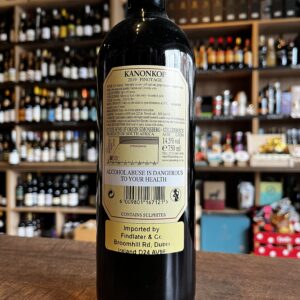
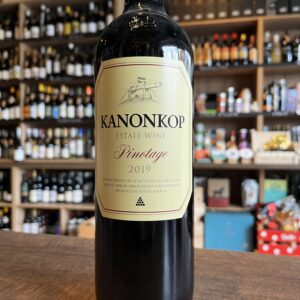 The name Kanonkop is derived from a hillock (kop) on the Simonsberg mountain above the wine estate from where, during the 17th and 18th centuries, a cannon (kanon) was fired to announce the arrival of sailing ships entering Table Bay. The roar of the cannon would be the signal to local farmers, who were waiting to make the 50-kilometer journey to the harbour, to load up their wagons with fresh fruit and vegetables to barter their produce. The first wines bearing the Kanonkop label were produced in 1973. To wine lovers familiar with the centuries old châteaux and domaines of Bordeaux and Burgundy respectively, the winemaking history of our estate may seem surprisingly young. For 1973 was the year in which Kanonkop’s contention for a place in the annals of South African wine greatness began, just three years before the death of the man to whom the wine estate owes everything it has achieved and all the recognition it has attained: Paul Sauer.
The name Kanonkop is derived from a hillock (kop) on the Simonsberg mountain above the wine estate from where, during the 17th and 18th centuries, a cannon (kanon) was fired to announce the arrival of sailing ships entering Table Bay. The roar of the cannon would be the signal to local farmers, who were waiting to make the 50-kilometer journey to the harbour, to load up their wagons with fresh fruit and vegetables to barter their produce. The first wines bearing the Kanonkop label were produced in 1973. To wine lovers familiar with the centuries old châteaux and domaines of Bordeaux and Burgundy respectively, the winemaking history of our estate may seem surprisingly young. For 1973 was the year in which Kanonkop’s contention for a place in the annals of South African wine greatness began, just three years before the death of the man to whom the wine estate owes everything it has achieved and all the recognition it has attained: Paul Sauer. -
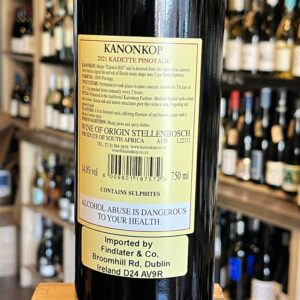
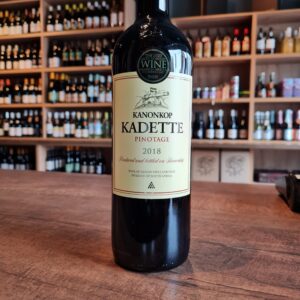 The Kanonkop Kadette Pinotage 2021 shows intense purple hues with lively aromas of fresh plums, mulberries and allspice, followed by a meaty undertone. The palate displays an inherent earthy touch, with flavours of crimson beetroot and maraschino cherries. Wonderful coherent balance between the fruit and the fresh acidity, with muscular support from the tightly woven tannin structure.
The Kanonkop Kadette Pinotage 2021 shows intense purple hues with lively aromas of fresh plums, mulberries and allspice, followed by a meaty undertone. The palate displays an inherent earthy touch, with flavours of crimson beetroot and maraschino cherries. Wonderful coherent balance between the fruit and the fresh acidity, with muscular support from the tightly woven tannin structure. -
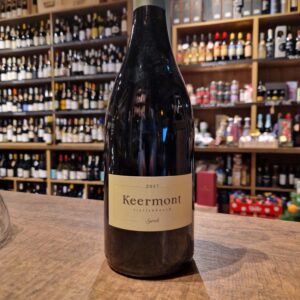 Keermont Vineyards is a specialist wine estate set in the naturally-formed amphitheatre between the Helderberg and Stellenbosch Mountain ranges. All grapes used in producing our wines are grown on Keermont Vineyards. Most of the vineyard parcels grow on deep red clay rich soil derived from sandstone and granite and are surrounded by indigenous vegetation. They lie between 250 and 400 metres above sea level at the top of the valley, and have a variety of aspects from North East to West facing. In 2001, the Wraith family moved to the Western Cape from Gauteng and in 2003 bought two adjacent farms which today make up Keermont Vineyards. Keermont Syrah is a blend of three different Syrah vineyard sites growing on Keermont Vineyards: Steepside Syrah: Growing on a North facing slope in deep, red clay-rich soils; this vineyard generally produces powerful full-bodied wines with rich, spicy flavours. Topside Syrah: An unirrigated west facing vineyard planted at 400m above sea level on rocky sandstone-based soil. Topside Syrah is usually a more aromatic wine with good structure and natural acid. Sweetwater Syrah: Situated in a rocky valley below the Fleurfontein spring, this is the coolest of the three Syrah sites and ripens the latest. Sweetwater Syrah is normally lighter and elegant in style with a herbal aroma. Only produced 12 665 bottles and 145 magnums. Maybe one of these will be yours to enjoy!
Keermont Vineyards is a specialist wine estate set in the naturally-formed amphitheatre between the Helderberg and Stellenbosch Mountain ranges. All grapes used in producing our wines are grown on Keermont Vineyards. Most of the vineyard parcels grow on deep red clay rich soil derived from sandstone and granite and are surrounded by indigenous vegetation. They lie between 250 and 400 metres above sea level at the top of the valley, and have a variety of aspects from North East to West facing. In 2001, the Wraith family moved to the Western Cape from Gauteng and in 2003 bought two adjacent farms which today make up Keermont Vineyards. Keermont Syrah is a blend of three different Syrah vineyard sites growing on Keermont Vineyards: Steepside Syrah: Growing on a North facing slope in deep, red clay-rich soils; this vineyard generally produces powerful full-bodied wines with rich, spicy flavours. Topside Syrah: An unirrigated west facing vineyard planted at 400m above sea level on rocky sandstone-based soil. Topside Syrah is usually a more aromatic wine with good structure and natural acid. Sweetwater Syrah: Situated in a rocky valley below the Fleurfontein spring, this is the coolest of the three Syrah sites and ripens the latest. Sweetwater Syrah is normally lighter and elegant in style with a herbal aroma. Only produced 12 665 bottles and 145 magnums. Maybe one of these will be yours to enjoy! -
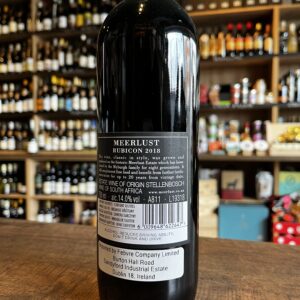
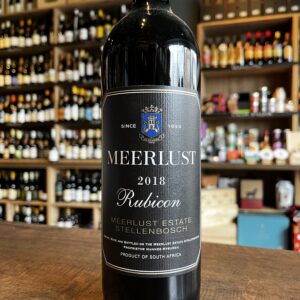 Meerlust Rubicon had a great impact on the history of South African wine. First made in 1980, it essentially set the pattern for Bordeaux blends in the country. There was of course a few pioners at this front that only used Cabernet Sauvignon varietal such as Kanonkop (Paul Sauer) in 1973 but as a blend as per Bordeaux style Meerlust changed the scene. According to Hannes Myburgh, his father was inspired by Julious Cesar words “Alea iacta est. The die is cast,” leading his troops towards Rome in 49BC. As this was a irreversable moment in history as there was no turning back after crossing the Rubicon river as this profoundly shifted Roman politics. Nico Myburgh from the 7th generation of the Meerlust estate and father of the current custodian, was holidaying in Bordeaux when he discovered that the terroir in this area of France was similar to that of the Eerste River Valley. Both have a distinctive climate, characterised by a cooling sea breeze. And both have a soil structure made up of decomposed granite and clay. The red wines produced by the two regions, however, were very different. Unlike the Western Cape’s specified cultivars, Bordeaux thrived on producing blends. Nico returned to Meerlust, filled with inspiration and the desire to create a blend of his own that would match those of the French. In 1980, after several years of experimentation together with winemaker Giorgio Dalla Cia, he announced the birth of the new blend. With proportions of 70% Cabernet Sauvignon, 20% Merlot and 10% Cabernet Franc, a new style of wine had been created in South Africa. Like Caesar, there could be no turning back. Nico and Giorgio had already considered a number of names for the new blend when Professor Dirk Opperman from the University of Stellenbosch, a friend of Nico’s suggested that “Rubicon” might be appropriate. The pair had, after all, crossed a new frontier – and changed the way South Africans thought about red wine. The Cabernet Sauvignon, Merlot, Cabernet Franc and Petit Verdot vineyards are hand harvested from February through to March and each individual vineyard block is kept separate throughout the fermentation process and monitored until the moment of blending.In wintertime, after malolactic fermentation has allowed the personality of each vineyard to assert itself in barrel, the wines are carefully assessed to produce the most expressive, harmonious and complex wine. The blend is assembled and then allowed another year in barrel for the components to harmonise. The wine is finally bottled and left for a further 2 years before release. Rubicon is always released at four years of age and will immediately offer the distinctive character and quality of the Estate. However, further bottle maturation is advised for the intriguing complexity of this classic wine to unfold and reveal itself.The first vintage, the 1980, remains vivacious and very much alive, even 30+ years after vintage. Subsequent vintages all express the personality and characteristics of their specific year. All vintages of Rubicon, however, share the hallmarks of wines grown at this special place: intensity, harmony, vibrancy, complexity and individuality.I suppose we could use here ''Veni, vidi, vici''
Meerlust Rubicon had a great impact on the history of South African wine. First made in 1980, it essentially set the pattern for Bordeaux blends in the country. There was of course a few pioners at this front that only used Cabernet Sauvignon varietal such as Kanonkop (Paul Sauer) in 1973 but as a blend as per Bordeaux style Meerlust changed the scene. According to Hannes Myburgh, his father was inspired by Julious Cesar words “Alea iacta est. The die is cast,” leading his troops towards Rome in 49BC. As this was a irreversable moment in history as there was no turning back after crossing the Rubicon river as this profoundly shifted Roman politics. Nico Myburgh from the 7th generation of the Meerlust estate and father of the current custodian, was holidaying in Bordeaux when he discovered that the terroir in this area of France was similar to that of the Eerste River Valley. Both have a distinctive climate, characterised by a cooling sea breeze. And both have a soil structure made up of decomposed granite and clay. The red wines produced by the two regions, however, were very different. Unlike the Western Cape’s specified cultivars, Bordeaux thrived on producing blends. Nico returned to Meerlust, filled with inspiration and the desire to create a blend of his own that would match those of the French. In 1980, after several years of experimentation together with winemaker Giorgio Dalla Cia, he announced the birth of the new blend. With proportions of 70% Cabernet Sauvignon, 20% Merlot and 10% Cabernet Franc, a new style of wine had been created in South Africa. Like Caesar, there could be no turning back. Nico and Giorgio had already considered a number of names for the new blend when Professor Dirk Opperman from the University of Stellenbosch, a friend of Nico’s suggested that “Rubicon” might be appropriate. The pair had, after all, crossed a new frontier – and changed the way South Africans thought about red wine. The Cabernet Sauvignon, Merlot, Cabernet Franc and Petit Verdot vineyards are hand harvested from February through to March and each individual vineyard block is kept separate throughout the fermentation process and monitored until the moment of blending.In wintertime, after malolactic fermentation has allowed the personality of each vineyard to assert itself in barrel, the wines are carefully assessed to produce the most expressive, harmonious and complex wine. The blend is assembled and then allowed another year in barrel for the components to harmonise. The wine is finally bottled and left for a further 2 years before release. Rubicon is always released at four years of age and will immediately offer the distinctive character and quality of the Estate. However, further bottle maturation is advised for the intriguing complexity of this classic wine to unfold and reveal itself.The first vintage, the 1980, remains vivacious and very much alive, even 30+ years after vintage. Subsequent vintages all express the personality and characteristics of their specific year. All vintages of Rubicon, however, share the hallmarks of wines grown at this special place: intensity, harmony, vibrancy, complexity and individuality.I suppose we could use here ''Veni, vidi, vici''

